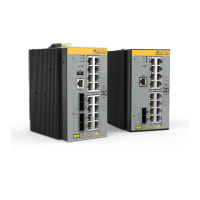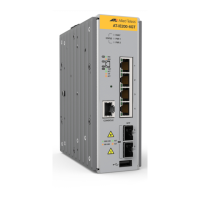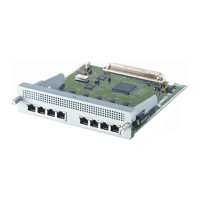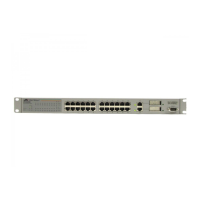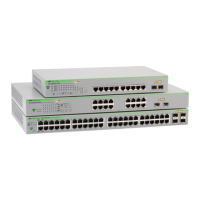C613-50631-01 Rev A Command Reference for IE340 Series 1261
AlliedWare Plus™ Operating System - Version 5.5.3-0.x
OSPFV3 FOR IPV6 COMMANDS
IPV
6 ROUTER OSPF AREA
ipv6 router ospf area
Overview Use this command to enable IPv6 OSPF routing on an interface.
Use the no variant of this command to disable IPv6 OSPF routing on an interface.
Syntax
ipv6 router ospf area <area-id> [tag <process-id>] [instance
<instance-id>]
no ipv6 router ospf area <area-id>
Defaults IPv6 OSPF routing is disabled by default.
When enabling IPv6 OSPF routing:
• the process-tag will default to a null value if not set.
• the Instance ID defaults to 0 if not set.
Mode Interface Configuration for a VLAN interface.
Usage notes When enabling IPv6 OSPF routing on an interface, specifying the area-ID is
mandatory, but the Process tag and Instance are optional.
See the OSPFv3 Feature Overview and Configuration Guide for more information
and examples.
Examples To enable IPv6 OSPF on VLAN interface vlan2 in OSPF area 1, with a tag of ‘PT2’, and
instance 2, use the commands:
awplus# configure terminal
awplus(config)# interface vlan2
awplus(config-if)# ipv6 router ospf area 1 tag PT2 instance-id 2
Parameter Description
<area-id> The ID of the IPv6 OSPF routing area. Can be entered as either an
IPv4 A.B.C.D address format, or as an unsigned integer in the
range, 0 to 4294967295. Use either of the following forms when
entering an area-ID:
• area-id <A.B.C.D> where A.B.C.D is a number entered in IPv4
address format.
• area-id <0 to 4294967295>.
<process-id> The process tag denotes a separate router process. It can comprise
any string of alphanumeric characters.
Note that this tag is local to the router on which it is set and does
not appear in any OSPF packets or LSA.
<instance-id> The OSPF instance ID, entered as an integer between 0 and 255.
This is the value that will appear in the instance field of the IPv6
OSPF hello packet.

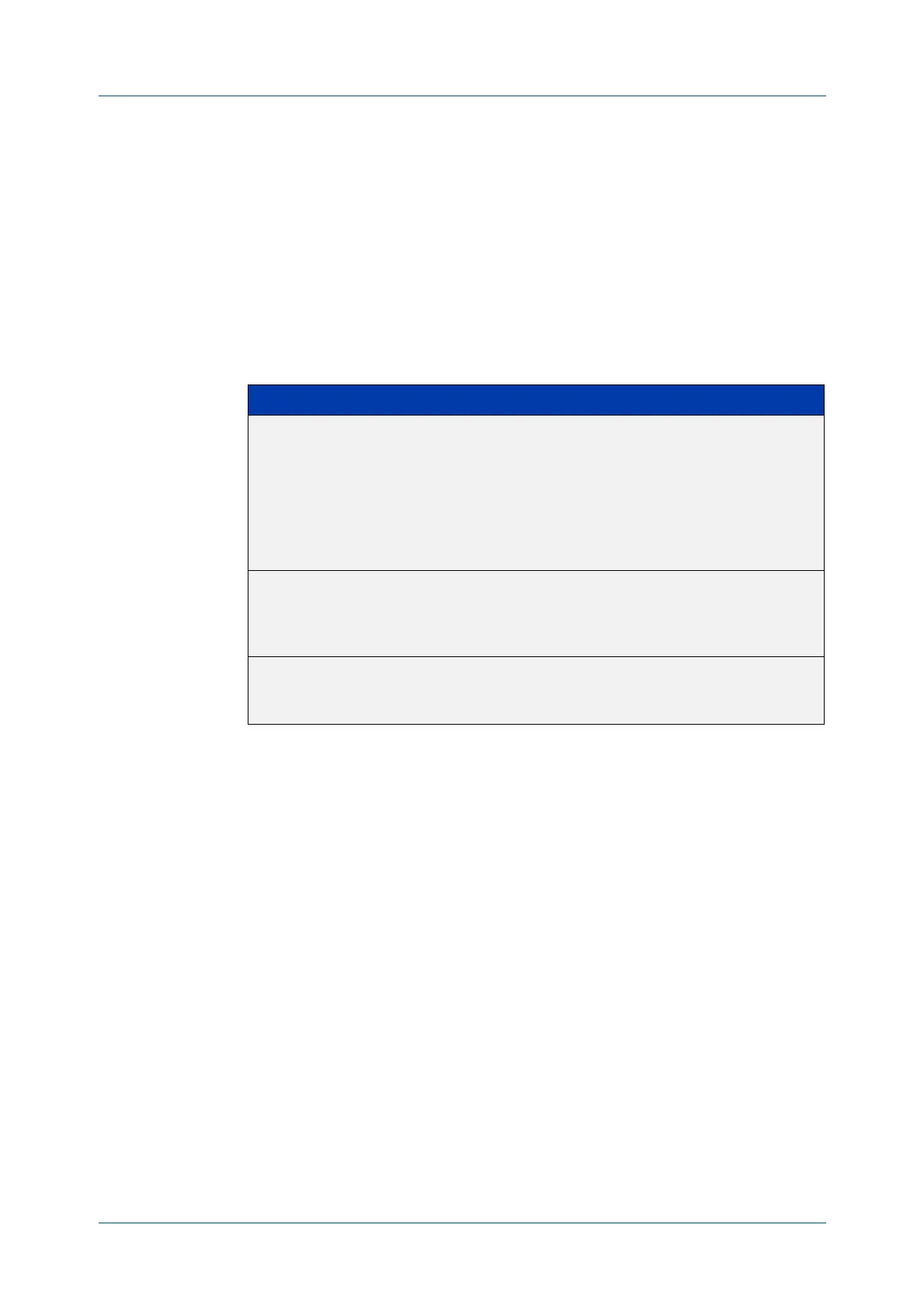